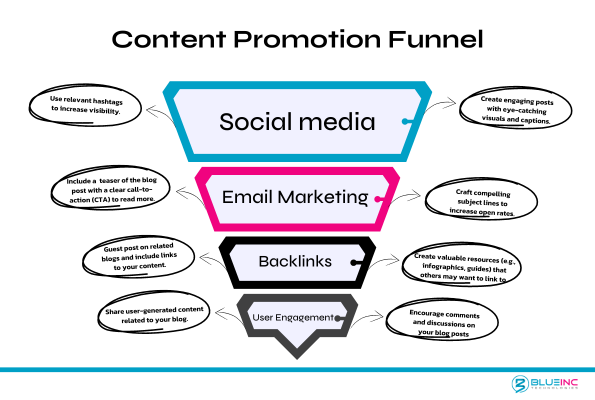
Summary
This blog post provides a comprehensive guide on optimizing blog posts for both readers and search engines. It covers essential strategies such as audience research, keyword usage, crafting engaging titles, structuring content for readability, and optimizing for SEO. Additionally, it emphasizes the importance of visuals, mobile optimization, and content promotion through social media and email marketing. By following these tips, you can create valuable blog content that not only ranks well in search engines but also keeps your readers engaged.
Writing a blog post that ranks well in search engines and keeps your readers hooked? Sounds tricky, right? But it doesn’t have to be. In this guide, I’ll show you how to optimise your blog posts so they work for both your readers and search engines. Let’s dive in!
1. Start with Audience Research: Know Who You’re Writing For
You can’t write a post that resonates with your readers if you don’t know what they want. Before you even start typing, spend some time understanding your audience. What are their pain points? What questions do they have? What questions are they asking?
Tip: Use surveys, social media polls, and analytics tools to gather insights. To get better understanding of your audience and how to speak to them, check out our article>>> How To Know What Your Audience Wants.
2. Focus on the Right Keywords
Once you know your audience, figure out what they’re searching for. Keywords are how search engines match your post with the user’s query. If you want to rank, you need to sprinkle these throughout your blog in a natural way.
But how do you find the right keywords? Start with a tool like Google Keyword Planner or Ahrefs. Or if you’re looking for a more detailed guide, check out our article >>> The Easiest Way to do Keyword Research to learn how to get started quickly.
3. Write a Killer Title
Your title is the first thing both readers and search engines see. It has to grab attention and include your primary keyword. Remember, people won’t click on a boring or vague title.
- Example: Instead of “How To Write Blog Posts,” try something like “How to Write Blog Posts That Rank and Convert.”
4. Structure Your Content for Easy Reading
Once readers land on your blog, they’re not going to stick around if the text is hard to follow. Break up your content with:
- Short paragraphs
- Bullet points (like this!)
- Subheadings (use keywords in these too)
And don’t forget about internal links! This helps readers explore more of your content and also boosts your SEO.
Linking to other posts like How To Research Your Target Audience keeps your audience engaged and improves site structure.
5. Craft Engaging, Value-Driven Content
At the heart of every great blog post is content that provides value. Sure, you want to rank, but first and foremost, you need to be solving a problem for your readers. The more useful and actionable your post is, the more likely people will share it, which also boosts your SEO.
Make sure your post answers questions, provides solutions, or gives helpful tips your readers can use right away.
6. Optimise for SEO (But Keep It Natural)
Okay, this is where the search engines come in. While you’re writing for your readers, don’t forget about those SEO must-haves:
- Primary and secondary keywords in titles, subheadings, and naturally within the content
- Meta descriptions that use keywords and entice clicks
- Alt text for images (this helps with both SEO and accessibility)
But here’s the trick—don’t overdo it. Keyword stuffing can make your content sound forced and clunky. Balance is key.
Learn how to do this effectively with our guide on SEO Writing: How to Write a Blog Post that Ranks.
7. Include Visuals for Extra Engagement
Images, infographic, and videos can break up text and make your content more engaging. They also give you another chance to include SEO-friendly alt text, which can help improve rankings.
Plus, visual content is more likely to be shared on social media, driving more traffic back to your post!
8. Optimise for Mobile
We live in a mobile-first world. If your blog post isn’t mobile-friendly, you’re losing a huge chunk of your potential audience. Make sure your blog’s design is responsive and loads quickly on mobile devices.
Tip: Test your blog post on both desktop and mobile before hitting publish. A bad mobile experience can push readers away faster than you can say “bounce rate.”
9. Promote Your Post
You’ve optimised your blog for SEO, written engaging content, and made sure it’s mobile-friendly. Now, it’s time to promote it! Share it on social media, send it to your email list, and encourage others to link back to it. The more visibility your blog gets, the better it’ll perform.
And remember, this ties back to audience research. If you know where your readers are hanging out (Instagram, LinkedIn, etc.), make sure you’re promoting your post there.
Final Thoughts: Optimising Your Blog Posts For Your Readers and Search Engines
Optimising a blog post for both readers and search engines might seem like a balancing act, but once you get the hang of it, it becomes second nature. It all starts with understanding your audience, crafting valuable content, and strategically using SEO best practices.
Looking for more tips? Check out our guides on How To Research Your Target Audience and How To Write a Blog Post That Ranks. Happy blogging!






